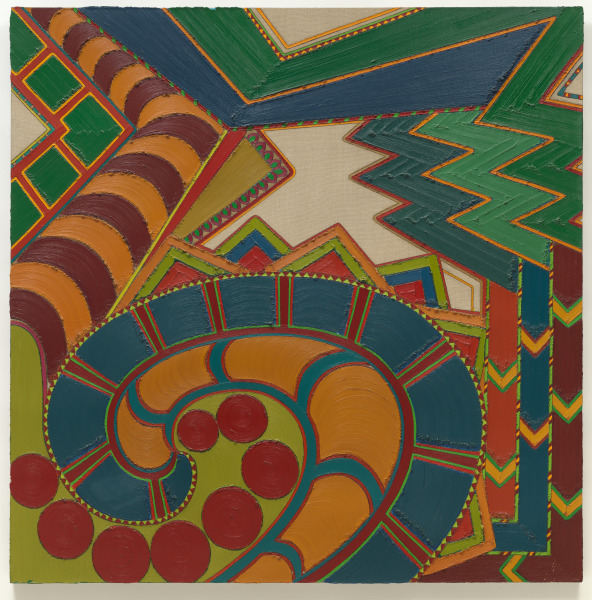In the 1970s, amidst the socio-political tumult and the fervor of various liberation movements, a less heralded but equally transformative artistic evolution unfolded—the Pattern and Decoration (P&D) movement. This movement, which began in the United States and flourished predominantly during the late 1970s and early 1980s, marked a radical departure from the prevailing norms of minimalist and conceptual art. It embraced a rich amalgamation of ornamental motifs, vibrant textiles, and intricate craftsmanship from a variety of global traditions, celebrating aesthetic joy and cultural diversity.
 |
| Mary Grigoriadis - Ixion |
Origins and Influences
The P&D movement originated as a reaction against the stark austerity of minimalism and the impersonal nature of conceptual art, which dominated the 1960s and early 70s. Artists associated with P&D found these dominant art forms too restrictive, cold, and detached from human experience. They sought to reintroduce color, texture, and emotion back into art. The movement was a conglomerate of diverse artistic voices that challenged the traditional hierarchies in art by valuing what was typically dismissed by Western art critics as "mere decoration."
P&D artists drew heavily on decorative traditions from around the world, including Islamic tile work, Byzantine mosaics, Quilting from African-American culture, and motifs from Asian silk textiles. This eclectic borrowing was not only a stylistic choice but also a pointed effort to elevate what had been considered inferior art forms—decorative, craft-based, and often created by women or non-Western cultures—to the status of high art.
Key Artists and Works
Among the notable artists who championed the Pattern and Decoration movement were Joyce Kozloff, Miriam Schapiro, Robert Kushner, and Valerie Jaudon. Each brought their unique perspectives and methodologies to their art, contributing to the rich tapestry that defined the movement.
Joyce Kozloff, an influential figure in P&D, integrated motifs from Islamic and Moroccan cultures in her intricate tile installations. Her works were not only visually compelling but also a political commentary on the imperialist consumption of non-Western art forms.
Miriam Schapiro co-founded the Feminist Art Program at CalArts and her work in P&D often incorporated elements of quilting, sewing, and appliqué, highlighting traditional "women's crafts" in the feminist context.
Robert Kushner utilized fabrics and plant motifs in large-scale paintings and installations, blending organic forms with high art and craft traditions, often emphasizing the performative aspect of his installations.
Valerie Jaudon, whose work is characterized by its rigorous abstraction of decorative motifs, brought a sense of structure and complexity to the aesthetics of decoration, bridging the gap between abstraction and ornamentation.
Exhibitions and Legacy
The movement saw a number of important exhibitions that helped in cementing its place in the art historical canon. "Patterns and Decorations" held at the Whitney Museum of American Art in 1976 was pivotal, showcasing the vibrancy and complexity of this style. More recently, the 2019 exhibition “With Pleasure: Pattern and Decoration in American Art 1972–1985” at the Museum of Contemporary Art, Los Angeles, revisited the movement, highlighting its significance and ongoing influence in the field of contemporary art.
The legacy of the P&D movement is evident in its challenge to the conventional boundaries between fine art and decoration, high and low culture, and its critical engagement with feminist and multicultural discourses. It paved the way for a more inclusive understanding of art, one that embraces a variety of materials, techniques, and cultural references.
The Pattern and Decoration movement was more than just a visual or aesthetic rebellion; it was a radical political and cultural critique of the art world's values. It not only questioned the Eurocentric and patriarchal narratives in art but also celebrated the richness of global artistic expressions and the essential human impulse for ornamentation. Today, as we witness a continued interest in artisanal and craft-based practices in art, the echoes of the P&D movement are still resonant, reminding us of the power of patterns and decorations to provoke, delight, and inspire.



.jpg)







No comments:
Post a Comment